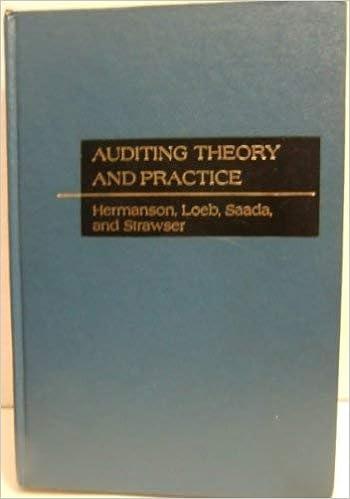Question
Exercise of Chapter 20 Auditing of Expenses - Line Cost Expenses of WorldCom WorldCom generally maintained its own lines for local service in heavily populated
Exercise of Chapter 20 Auditing of Expenses - Line Cost Expenses of WorldCom
WorldCom generally maintained its own lines for local service in heavily populated urban areas. However, it relied on non-WorldCom networks to complete most residential and commercial calls outside of these urban areas and paid the owners of these networks to use their services. Such costs were called line cost expenses, and were WorldComs largest single expense, accounting for approximately half of the companys total expenses from 1999 to 2001. WorldCom regularly discussed its line cost expenses in public disclosures, emphasizing, in particular, its line cost E/R ratio the ratio of line cost expense to revenue. Under the US GAAP, WorldCom was required to estimate its line costs each month and to expense the estimated cost immediately, even though many of these costs would be paid later. WorldCom set up a liability account, known as an accrual, to record the estimated expense. As the bills arrived from its outside parties, sometimes many months later, WorldCom would pay them and reduce the previously established accruals accordingly.
As required under GAAP, WorldCom re-evaluated the accruals periodically to see if they have been stated at appropriate levels. If charges from service provides were lower than estimated an accrual is released. The amount of the release is set off against the reported line cost expenses in the period when the release occurred. For example, if an accrual of $50 million was established in the first quarter and $15 million of that amount was deemed excess or unnecessary in the second quarter, then $15 million should be released in the second quarter, thus reducing reported line cost expenses by $15 million. Beginning in the second quarter of 1999 management started ordering several releases of line cost accruals, often without any underlying analysis to support the releases. For example in the second quarter of 2000, David Myers, a CPA who served as senior vice president and controller of WorldCom, requested that UUNET (a largely autonomous WorldCom subsidiary at the time) release $50 million in line cost accruals. UUNETs acting CFO David Schneeman asked that Myers explain the reasoning for the requested release, but Myers insisted that Schneeman book the entry without an explanation. When Schneeman refused, Myers wrote to him in an email, I guess the only way I am going to get this booked is to fly to DC and book it myself. Book it right now, I cant wait another minute. After Schneeman refused again, Betty Vinson in general accounting allegedly completed Myers request by making a topside corporate-level adjusting journal entry releasing $50 million in UUNET accruals.
Question: 1. How would WorldCom record journal entries when paying to the network services providers and when releasing the accruals?
2. Can the strategy of early release work over the long run? (Think what will happen if subsequent bills are larger than the balance of accruals? What journal entry must be prepared?)
3. WorldCom understated expenses for USD 7 billion using this strategy over time. How can this be possible? What alternative account could have been used to settle the accruals?
4. Can you design an analytical procedure to evaluate the reasonableness of line costs? (AA auditors focused on Line cost E/R ratio and found it stable over time)
5. What other test(s) can you think of to test the potential understatement of line costs?
Step by Step Solution
There are 3 Steps involved in it
Step: 1

Get Instant Access to Expert-Tailored Solutions
See step-by-step solutions with expert insights and AI powered tools for academic success
Step: 2

Step: 3

Ace Your Homework with AI
Get the answers you need in no time with our AI-driven, step-by-step assistance
Get Started


